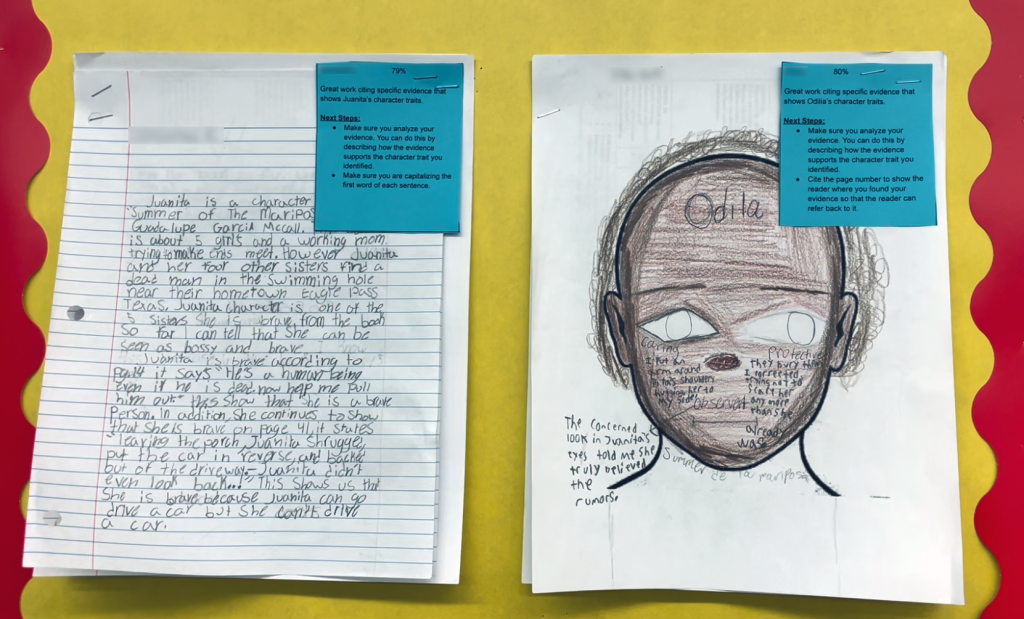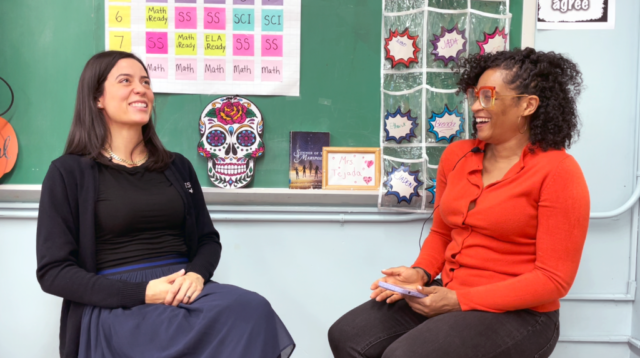Jennifer Tejada, a Special Education teacher from K347, was a standout in classroom engagement according to our Fall 2022 administration of the Panorama survey. 100% of her students responded favorably to the question, “How interesting do you find the things you learn in this class?” 84% of students report being excited to go to her class.
We just had to pay her a visit and find out more about her classroom. Read her interview with Teaching Matters Network Director Jacobē Bell below! Interview has been condensed and edited.
I noticed you have flags all around your room. Can you tell me about that?
Representation matters significantly for students and staff members because when you are represented, you feel more welcome to take risks. That’s one of the most important things that I’ve tried to establish with my students — making sure that they’re in an environment in which they feel they are part of and that they’re responsible for contributing to as well.
When you are represented, you feel more welcome to take risks.
What else do you do to encourage student engagement?
I have multiple incentives. “You Rocks” tickets are our positive behavior intervention plan. I give out tickets when students show respect, citizenship, kindness, and safety. I also give them out when they participate in class even when their answers are incorrect. This way, they can feel comfortable taking risks.
Eventually, they use “You Rocks” to purchase small things that I have in this “You Rocks” store for the class. I survey the students and ask them what kind of snack they’d like. They look forward to the store opening up, especially on days where we’re in here for three periods in a row. I make sure they have some snacks, give them a little stretch, and then we keep the ball rolling.
What undergirds your lessons with really high engagement?
The lessons that have the highest engagement are those that are tailored to student performance levels. So for example, during our iReady periods, I like to break them up into groups based on their reading levels, and then I’ll assign work that is rigorous for that group.
Some tend to think of rigor as something that’s super, super difficult. But rigor is more about making sure that students push themselves a little beyond what they’re capable of so that they can find some success but also struggle. So I give them something that’s slightly above their level, and they tend to find the lesson more engaging. They see the positive results of productive struggle, which they don’t realize until they are pushed.
They see the positive results of productive struggle, which they don’t realize until they are pushed.
What are some other ways you help students feel like you understand them?
Every year, I start off the year with a student interest survey. I really take the time to get to know them on an individual level and then, especially during those first few weeks of school, I make it my mission to take what they said and put it into the lesson somehow. For example, if Samatha said she likes volleyball, I’ll include it in the do now.
I’m a big believer in student choice as well. When you give students an option, they’re more likely to be engaged. For example, on my bulletin board right there, we just had a character analysis assignment. I gave students the option to write an essay or label an illustration. That really helps with engagement when you give them the opportunity to choose. They feel like they’re heard.

How do you get your students to value your subject?
I try to find a way to make the content relatable to the student. How is this important to you? Going back to the character analysis assignment — why is it important for you to be able to identify someone’s character traits? How can it help you in the real world? And sometimes that’s difficult, but there’s always some type of link that you can draw. It’s important for teachers to help build that bridge so that students can get to that connection and see why this is important.
There’s always some type of link that you can draw.
If you were to give advice to a teacher who wanted to improve engagement in their classroom, what would you tell them?
Remind students that you’re a human being. Remind them that you have feelings too, that you also struggle. Find some commonality with the students, whether it’s music or a show. They might say, “I’m watching Wednesday on Netflix.” You could be like, “Oh! I’m watching that too! How do you like it? What do you notice about the character?” There’s always a way to tie it to what you’re learning. Find a connection between what you like, what the content is about, and what the students like.
